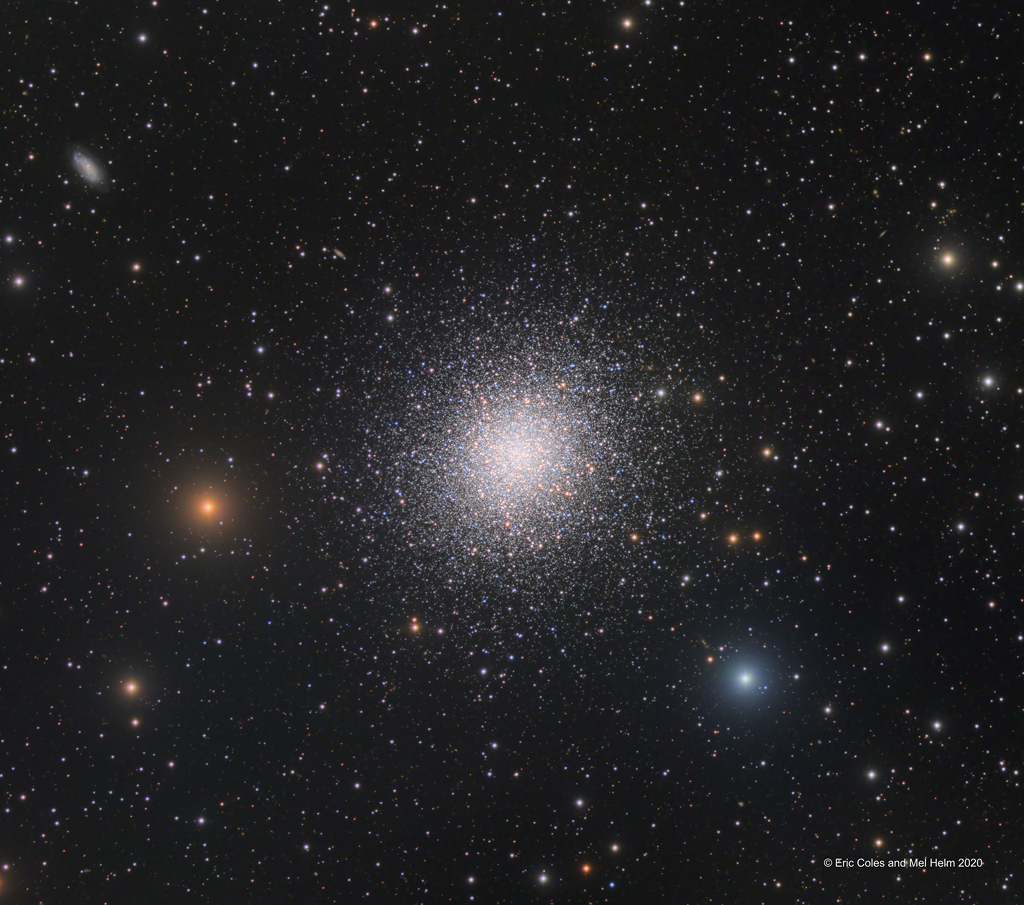2020 March 19
M13: The Great Globular Cluster in Hercules
Image Credit & Copyright: Eric Coles and Mel Helm
Explanation: In 1716, English astronomer Edmond Halley noted, “This is but a little Patch, but it shews itself to the naked Eye, when the Sky is serene and the Moon absent.” Of course, M13 is now less modestly recognized as the Great Globular Cluster in Hercules, one of the brightest globular star clusters in the northern sky. Sharp telescopic views like this one reveal the spectacular cluster’s hundreds of thousands of stars. At a distance of 25,000 light-years, the cluster stars crowd into a region 150 light-years in diameter. Approaching the cluster core upwards of 100 stars could be contained in a cube just 3 light-years on a side. For comparison, the closest star to the Sun is over 4 light-years away. The remarkable range of brightness recorded in this image follows stars into the dense cluster core and reveals three subtle dark lanes forming the apparent shape of a propeller just below and slightly left of center. Distant background galaxies in the medium-wide field of view include NGC 6207 at the upper left.
Tomorrow’s picture: when night/day = 1
M13:武仙座大球状星团
影像来源及版权:EricColes和MelHelm
说明:1716年,英国天文学家埃德蒙·哈雷写道:“这只是一小块光斑,但如果天气很好、没有月光,就可以用肉眼看到。”M13现在略有夸张地被称为武仙座大星团,它是北天最明亮的球状星团之一。像这样清晰的望远镜照片揭示了这个壮观星团中的几十万颗恒星。在离我们25,000光年的距离上,这些恒星聚集在直径150光年的范围内。在接近星团中心的区域,边长3光年的立方体空间内会分布有超过100颗恒星。作为比较,离太阳最近的恒星也在4光年之外。这张照片记录了很大的亮度变化范围,可以看清星团中心密集的星点,在中心之下稍微偏左的地方还可以看出由3条细微的暗带形成的螺旋桨的形状。这张中等视场的照片里还包括左上角遥远的背景星系NGC6207。
明日一图预告:when night/day = 1



